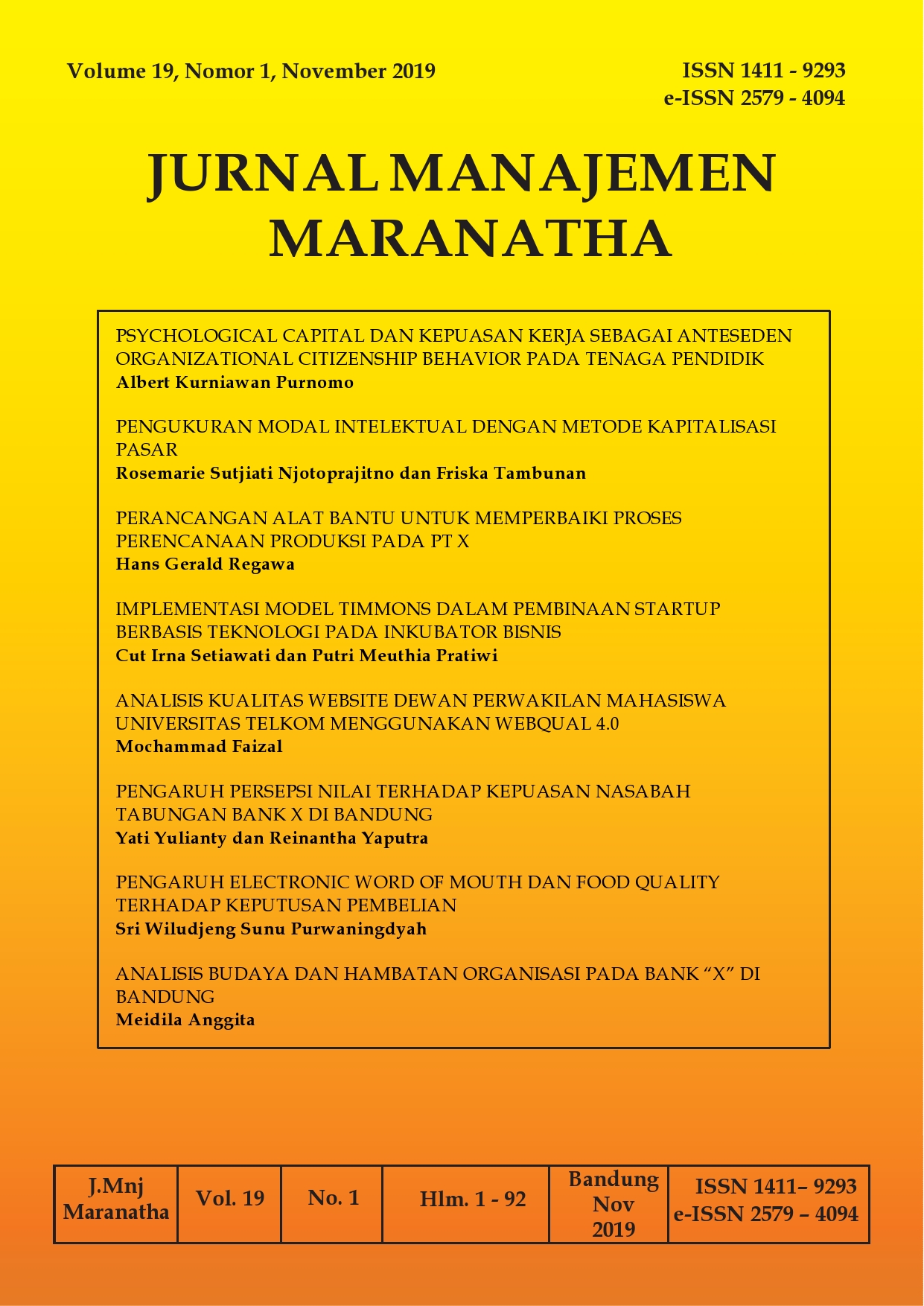Analisis budaya dan hambatan organisasi pada Bank “X” di Bandung
Isi Artikel Utama
Abstrak
Culture and blockage is one of the important elements in company life, because it can make a significant contribution to the success or failure of an organization. The model used to assess the organizational culture is the Organizational Culture Assessment Instrument (OCAI) by Cameron & Quinn. This model has four cultural types (clan, adhocracy, market, and hierarchy) and of the four cultural has 6 dimensions (dominant characteristic, organizational leadership, management of employee, organizational glue, strategic emphases, and criteria for success. Organizational blockage style is using Unblocking Organizational Questionnaire (UOQ) by Francis & Woodcock. This model has 14 blockages in organization (unclear aims, unclear values, inappropriate management philosophy, lack of management development, confused organizational structure, inadequate control, inadequate recruitment and selection, unfair rewards, poor training, lack of personal development, inadequate communication, poor teamwork, low motivation, and low creativity). In collecting the data, the sample used is 28 people by distributing questionnaires. The results of this study it was found that Bank “X” adopted adhocracy cultural. However, for the next five years they are expected to have a combination of different cultures namely market and clan culture. Market cultural dimensions will be the main focus in the next five years to improve target achievement. This cultural profile picture can be use as input for corporate to policy making to create organizational culture that compatible with the corporate’s vision dan mission. And for the result of blockage organization in the utilization of Human Resources in Bank "X" are poor trainning, unfair rewards and low creativity.
Unduhan
Data unduhan belum tersedia.
Rincian Artikel
Cara Mengutip
Anggita, M. (2019). Analisis budaya dan hambatan organisasi pada Bank “X” di Bandung. Jurnal Manajemen Maranatha, 19(1), 81–92. https://doi.org/10.28932/jmm.v19i1.2022
Terbitan
Bagian
Articles

